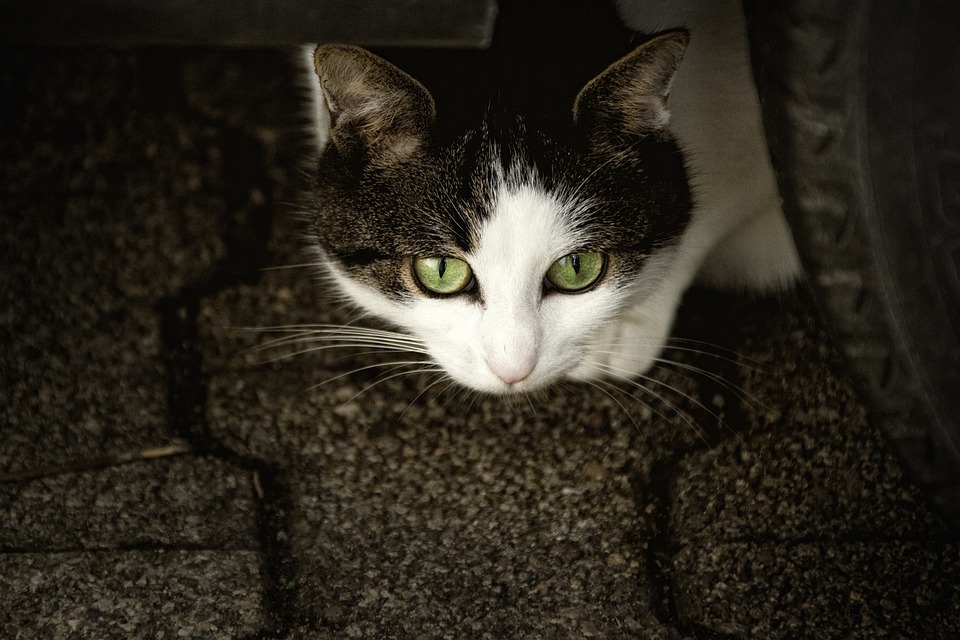Playing is an essential part of a cat’s life, allowing them to exercise, relieve stress, and satisfy their natural instincts. However, some cats develop a peculiar habit of playing with their own tail. In this article, we will explore the reasons behind this behavior and provide insights on how to address it. Additionally, we have included a FAQs section to answer common queries related to tail-playing in cats.
Why Do Some Cats Play with Their Tails?
Understanding the motivations behind tail-playing can help us address this behavior more effectively. Here are a few possible reasons:
1. Boredom and Excess Energy: Cats with limited stimulation or insufficient playtime may resort to tail-chasing as a way to entertain themselves.
2. Hunting Instincts: Cats are natural hunters, and their tails resemble prey. Engaging in tail-playing can be an expression of their hunting instincts.
3. Attention-seeking: Some cats may play with their tails to gain attention from their owners or to initiate interactive playtime.
4. Stress and Anxiety: Cats experiencing stress or anxiety may find tail-playing as a coping mechanism.
How to Address Tail-playing Behavior
If your cat has developed a habit of playing with its tail, there are several strategies you can employ to address this behavior:
1. Increase Playtime: Ensure your cat receives sufficient physical and mental stimulation through interactive play sessions using toys or puzzle feeders. Engaging your cat in play before the tail-playing behavior typically occurs can redirect their energy in a positive way.
2. Provide Enrichment: Enrich your cat’s environment with scratching posts, climbing trees, and interactive toys to keep them mentally stimulated and prevent boredom.
3. Distraction Techniques: Whenever you notice your cat starting to play with its tail, redirect their attention by offering a different toy or engaging them in a play session. This will help break the cycle of tail-playing.
4. Seek Veterinary Advice: If tail-playing becomes excessive or compulsive, it may be a sign of underlying medical issues or anxiety disorders. Consult with a veterinarian to rule out any medical causes and discuss potential behavioral interventions.
FAQs:
1. Is tail-playing behavior harmful to my cat?
Tail-playing behavior, in moderation, is usually harmless. However, excessive tail-chasing can lead to physical injuries, such as sprained tails or broken claws. It is important to address this behavior to prevent any potential harm to your cat.
2. How can I differentiate between playful tail-chasing and obsessive behavior?
Playful tail-chasing is intermittent and occurs during periods of playfulness, usually followed by rest. On the other hand, obsessive tail-chasing is repetitive and can last for extended periods. If you suspect obsessive behavior, consult with a veterinarian or a certified animal behaviorist for guidance.
3. Can I punish my cat for tail-playing?
No, punishment is not recommended as it can lead to increased stress and anxiety. Instead, focus on positive reinforcement by rewarding your cat’s desired behavior and redirecting their attention to appropriate toys or activities.
4. Will spaying or neutering my cat stop tail-playing behavior?
Spaying or neutering your cat may help reduce certain behaviors influenced by hormonal changes, but it might not directly address tail-playing behavior. Employing the strategies mentioned earlier will be more effective in managing and redirecting this behavior.
Conclusion:
Understanding the reasons behind tail-playing and employing appropriate strategies can help address this behavior in cats effectively. By providing ample playtime, enrichment, and seeking veterinary advice if necessary, you can ensure your cat’s tail-playing behavior remains within healthy limits, promoting their overall well-being.








